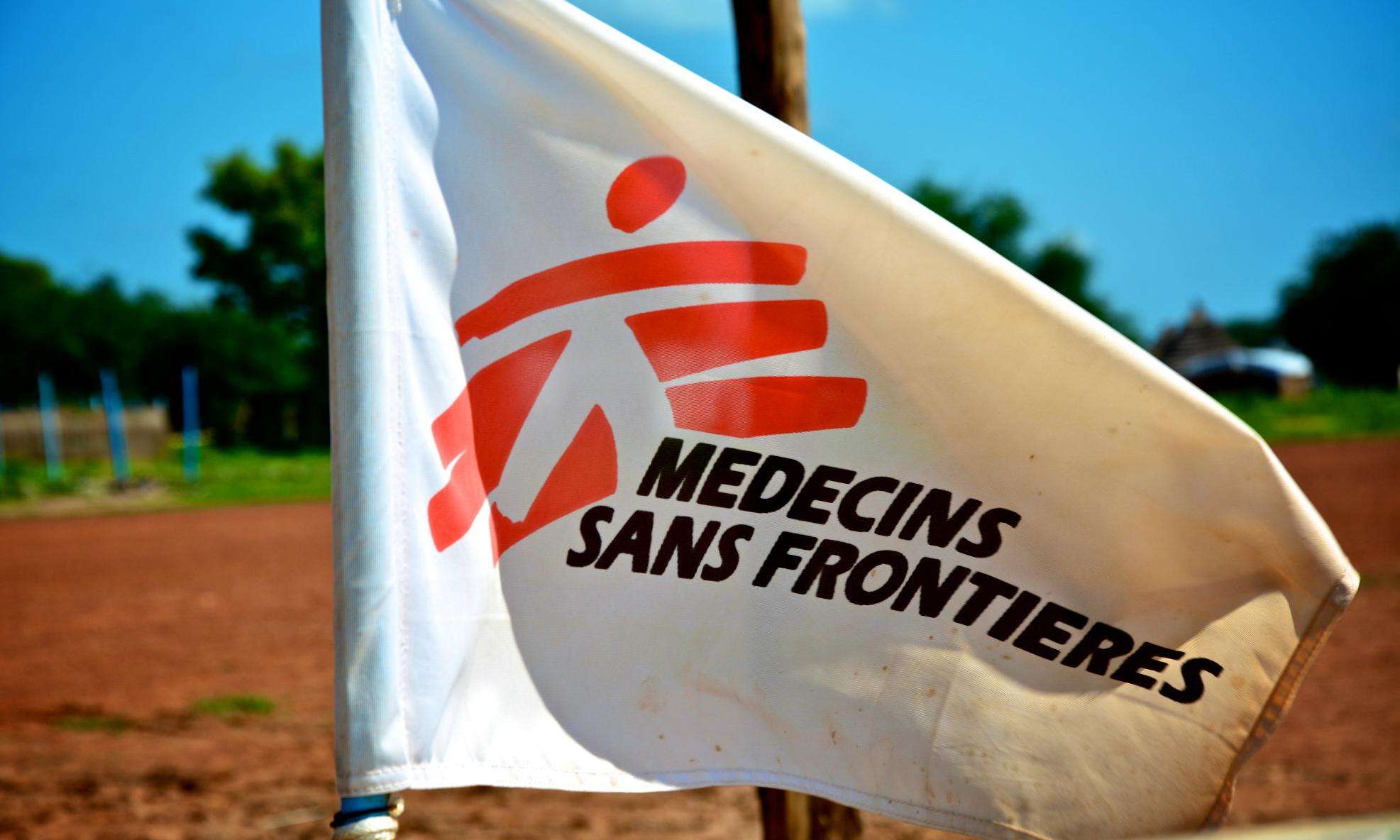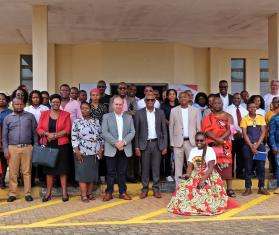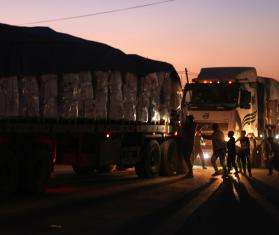Ruth Kauffman, a nurse and midwife based in El Paso, Texas, has completed more than a dozen assignments with Doctors Without Borders/Médecins Sans Frontières (MSF) in a variety of roles, from working as a trainer in emergency obstetrics and Ebola response in Sierra Leone to serving as project coordinator for MSF’s sexual and intimate partner violence program in Papua New Guinea.
For the last two months, Kauffman and her team have been working in partnership with officials, community leaders, service organizations, and health care workers from the Navajo Nation and Pueblo peoples in the southwestern states of New Mexico and Arizona. The MSF team provided guidance on infection prevention and control measures at a variety of medical and non-medical facilities, from group homes to correctional facilities, and worked closely with local partners to expand public health information and education about COVID-19 at the community level.
Kauffman returned home in June. Here, she discusses her experience.
MSF does not normally operate humanitarian projects in the US. Why did you decide to launch one in Native American communities?
In April, it became evident that a few of the Native American Pueblos (nations) in New Mexico were starting to experience a spike in COVID-19 infections. It was clear even then that COVID-19 had the potential to severely impact small rural Pueblo communities if it was not controlled quickly.
Felicia Mancini, an Albuquerque-based MSF nurse midwife, reached out to her contacts and was put in touch with Pueblo leaders in New Mexico. The two of us, and others in the organization, met with high-level leaders, politicians, medical specialists, and activists from both the Pueblos and the Navajo Nation, and we soon received an invitation to begin work in some of the most heavily impacted communities.
What was it like in these communities in the initial weeks of the COVID-19 outbreak?
There are 19 Pueblos in New Mexico, each with its own government but sharing a common history and culture. Each has its own governor and is independent in many aspects. These nations are separate from the state government and were actually excluded from funding in the first draft of the federal Coronavirus Aid, Relief, and Economic Security (CARES) Act. As a result, they experienced many challenges getting COVID-19 test kits, equipment, and supplies and establishing isolation, quarantine, and contact tracing activities.
These small, independent nations have survived a history of infectious diseases introduced by colonizers and are particularly aware of the threat posed by outbreaks. With COVID-19, there was a fear of losing a large percentage of the community, as had happened in prior outbreaks including smallpox and the Spanish flu. Furthermore, the Pueblos were afraid of losing tribal elders and, with them, cultural knowledge.
So, like nations all over the world, the Pueblos reacted to the threat of COVID-19 by closing their borders and requiring people to stay home. Each one responded a little differently, quickly mobilizing their own emergency operations centers and services—such as home food delivery—with the idea that home quarantine and isolation would stop transmission. In early April, one Pueblo even opened a quarantine and isolation center for tribal members at their hotel.
Although these efforts helped control the spread of COVID-19 to some degree, it quickly became evident that household transmission was the biggest risk factor. The Pueblos traditionally live in multi-generational family homes with many people often living in close quarters, making it more difficult to reduce household transmission. At the same time, the community was not initially receptive to the idea of leaving the home while they were sick for isolation or quarantine, though attitudes changed over time.
How is MSF helping in Native American communities during the COVID-19 outbreak?
In general, we have provided infection prevention and control (IPC) assessments, trainings, and recommendations for decreasing transmission in households, community centers, health facilities, congregate living spaces, alternative care facilities, isolation centers and correctional facilities. We have also provided logistical, structural support to implement these recommendations and technical medical support for health facilities and isolation centers, such as helping to optimize patient flow.
We have also been training and supporting community hygiene and health promotion teams, which go out into communities house-to-house educating families on decreasing household spread and providing home hygiene kits, cloth masks, and health education materials. Lastly, we did a lot of local advocacy work with tribal leaders and the Indian Health Service (IHS).
We also supported correctional facilities in the Navajo Nation. Correctional and detention facilities can have high rates of infection. At one center, 31 percent of the staff tested positive for COVID-19. Being able to do very practical support to help staff improve procedures and reduce the spread of the virus was important in this setting. Similarly, bringing attention to the IPC needs of congregate living spaces in the Navajo Nation, including nursing homes and homes for people with special needs, was another highlight of the project there.

How did your previous experience working with MSF prepare you for your work on COVID-19 in the Pueblos and the Navajo Nation?
Having worked extensively in the 2014–2016 Ebola outbreak in Sierra Leone was especially helpful in this work. It is interesting to see that communities around the world respond very similarly to unknown outbreaks. This can include fear of the disease itself but also of “outsiders” who may bring it into the community; stigma around having the disease; and shame around introducing the disease into a family or community. People and communities can feel alone and isolated during an outbreak, so addressing these issues is critical to outbreak response work.
We’ve also learned that addressing the outbreak at the community level is essential. In the US, like many places, the main focus of the health system at the beginning of the COVID-19 outbreak was on preparing for the potential “surge” in hospitals and making sure beds and ventilators would be available. But in this area, the vast majority of patients are cared for in the community, rather than being admitted to hospitals as inpatients. So we focused on community response and connecting communities to hospitals when needed. This is the same thing MSF has witnessed in other countries where secondary health care isn’t widely available.
What is the current status of the outbreak in the Pueblos and the Navajo Nation? What do you see as the most pressing public health needs in the weeks and months to come?
Like everywhere, new outbreaks in new communities or spikes in communities with existing outbreaks are the biggest risk factors as reopening progresses. Expecting all areas to be on the same re-opening schedule does not make sense. In Navajo Nation, the COVID-19 curve was still high in mid-May when the state of Arizona started reopening. It felt absurd watching tourists driving through Navajo Nation towing boats on the way to Lake Powell in the middle of the outbreak.
Moving forward, regardless of the degree of community opening, we need to all be smart, as risk of infection now is as high or higher than it was a month ago. Employing all the mechanisms that we know work will be essential: Physical distancing as much as possible, wearing masks (especially inside in offices or schools), washing hands, screening for symptoms, and doing meetings outside when possible can all help prevent spread. Then, ensuring ongoing contact tracing, quarantine of exposed people, and isolation of infected people will be important.




